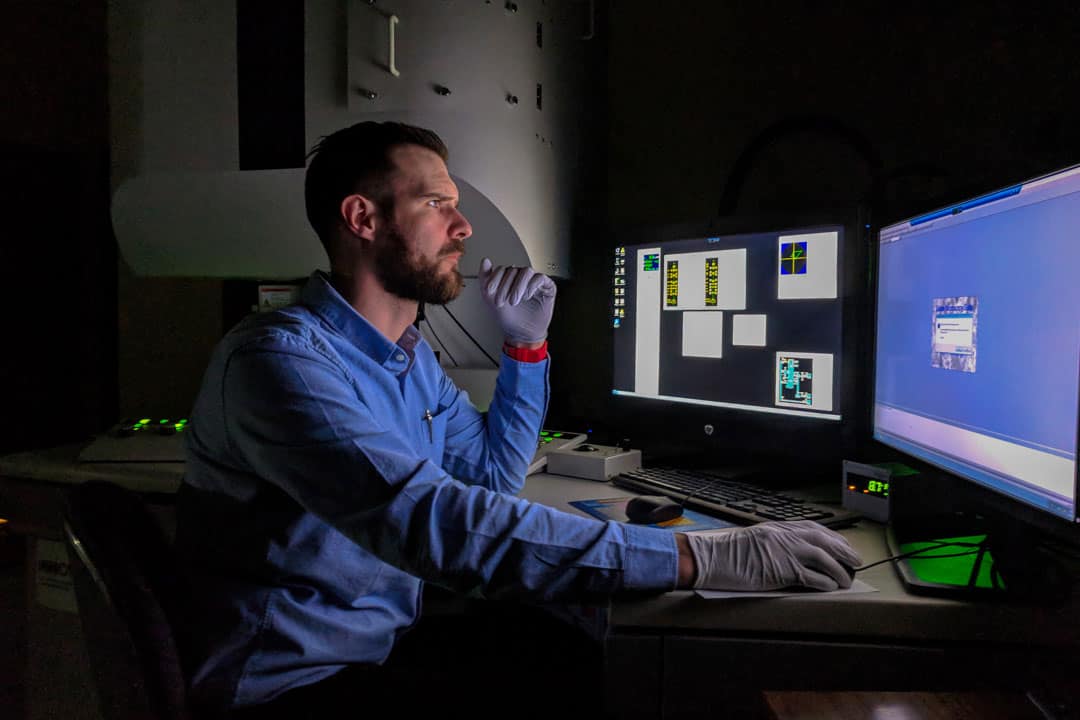Anton Sediako, a PhD candidate in Mechanical and Industrial Engineering, won best poster at a 2018 conference in Madrid, Spain for his research in emissions reduction. The World Conference on Carbon, held in July by the Spanish Carbon Group, recognizes advances in carbon science and its applications.
Sediako’s poster presents a novel technique for studying carbon particulate matter, a harmful by-product of fossil fuel combustion. Supervised by Professor Murray Thomson, his research explores the formation of particulate matter, its reactions with other substances, and its oxidation — how carbon loses electrons to form a compound with oxygen.
Sediako entered Thomson’s Combustion Research Lab in 2014 and began investigating how current fuel types may be modified to produce fewer particulate matter pollutants. However, while studying fuel chemistry, he and his co-authors discovered that high-resolution electron microscopy could be used to observe combustion reactions directly in the lab.
Through a collaboration with technology firm Hitachi High-Technologies, Sediako and his lab developed the new technique to visualize nanoscale combustion reactions.
The researchers focused on developing substrates — surfaces necessary to take microscopic measurements — appropriate for studying how carbon combusts, and how they might develop cleaner combustion techniques.
Challenges with developing this imaging technique included accumulating the evidence necessary to garner acceptance from the wider academic community.
“The biggest challenge by far has been bringing this [microscopy] technique to a whole new field and proving to them that it’s a valid technique,” explained Sediako in an interview with The Varsity.
“[Combustion is] not a new field… You don’t really have to prove that your thermocouple works the way it should work because it’s a thermocouple — it’s been used before,” said Sediako, giving an example of an established technique.
A thermocouple is a device that measures temperature, and is often used in fuel and combustion experiments.
Sediako’s microscopy technique is novel, and consequently unfamiliar to many long-time academics in carbon combustion research. He therefore had to anticipate a wide range of potential problems and concerns about the new technique, which could be raised by current academics in the field.
Sediako had to convincingly demonstrate that his technique produced imagery that truly represented what occurs during carbon combustion.
“With the new technique,” said Sediako, “you really have to iron out all the potential flaws and own them.”
Sediako believes communication skills — like being able to present the technique in an accessible manner to those with a limited background in microscopy — were essential in establishing the new technique.
Sediako and his research group are now focusing on applying this technique to advance both basic and applied research in carbon combustion.
In a collaboration with Pennsylvania State University, the researchers are designing nanocatalysts to consume carbon to “eat the harmful product and prevent [its] release into the environment.”
They also plan to apply the technique directly to automobile engine design, improving battery materials, and develop better filtration methods for carbon emissions.


